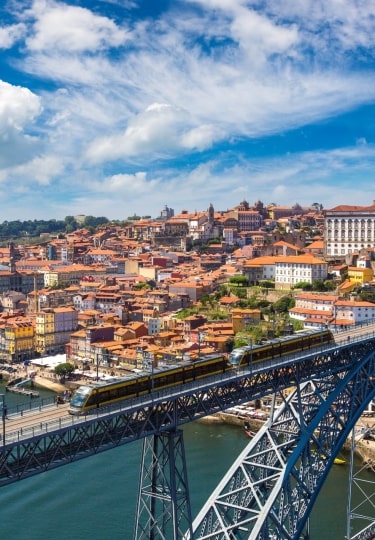Porto, Portugal’s enchanting second city, lies on the Atlantic coast at the mouth of the Douro River. The city is famous as the epicenter of the port wine trade and is the gateway to the mountainous Douro Valley. The fact that both the Douro Valley, Porto, and the historic city center are protected as UNESCO World Heritage Sites is a testament to their beauty and historical importance.
Porto itself is a delightful jumble of colorful old houses, Gothic churches, cobblestone streets, and riverfront cafés. It’s easy to fill your day here, whether you join a walking tour, enjoy a port tasting, or head out of town to explore the countryside.
The Douro is always at the forefront, whether you’re touring vineyards high in the hills, enjoying a river cruise on a traditional rabelo boat, or people-watching in a waterside restaurant.
Why Visit Porto & the Douro Valley
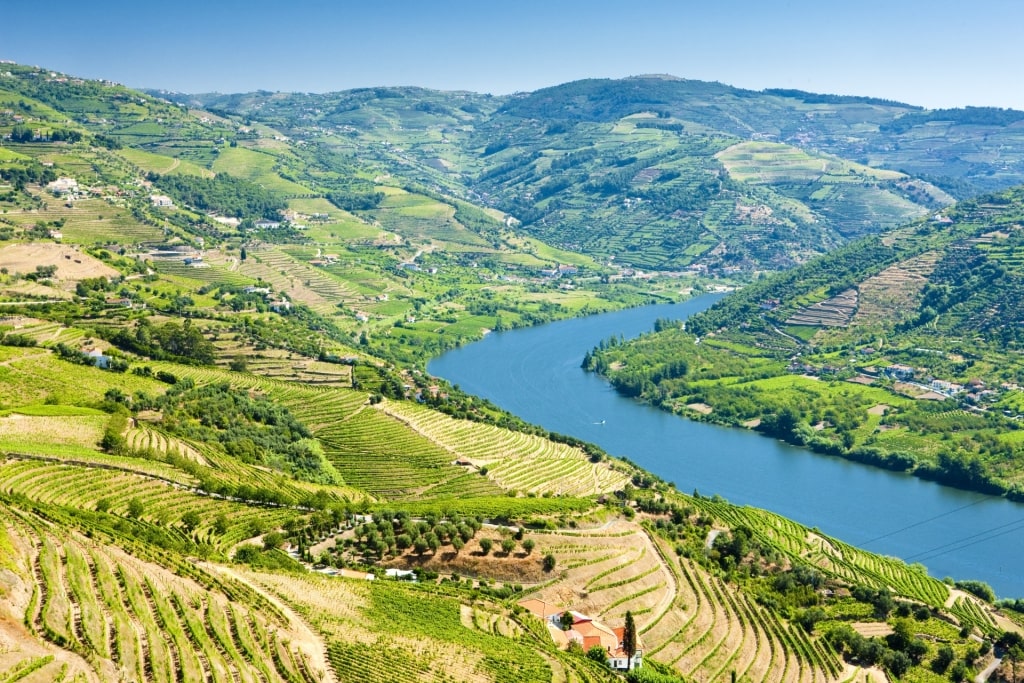
Douro Valley
There are many reasons to come to the Douro Valley, Porto. The culture that’s grown up around port wine is one; this region is the epicenter of port wine production and is the oldest demarcated wine region in the world.
Many people visit for the glorious countryside, mile upon mile of forested mountains, with vines snaking around the contours of the hills through which the river winds.
Porto itself is a joy, its narrow streets and hilly neighborhoods revealing ornate churches, beautiful artworks, and stylish shops, whether you’re in the market for vintage or contemporary design.
History & Culture
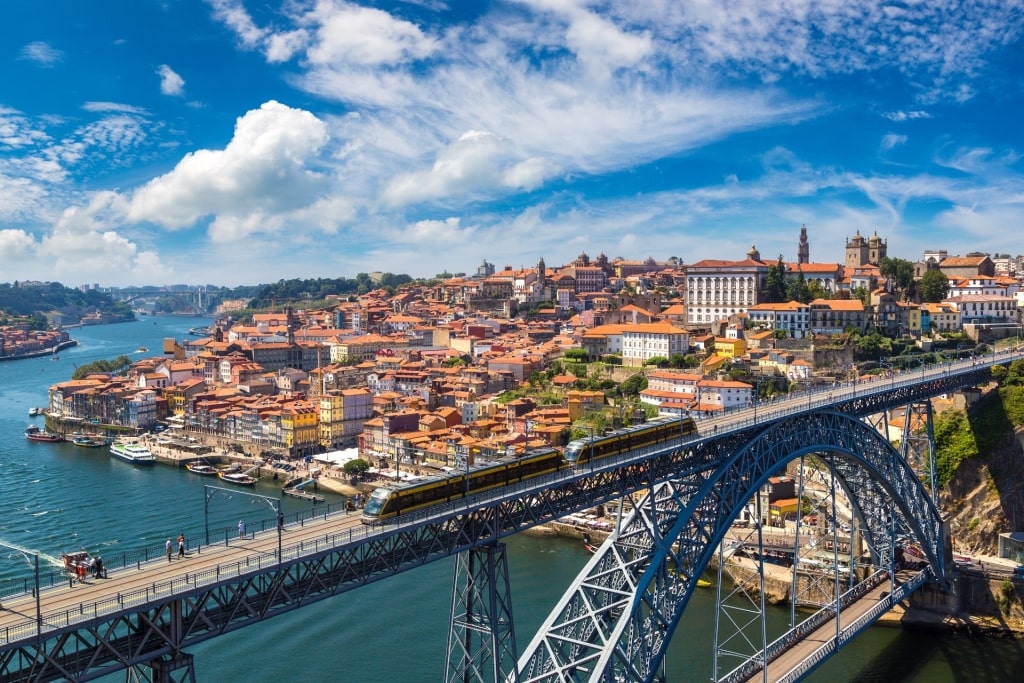
Porto
What’s now Porto has been occupied since the time of the Celts, who built a hamlet at the mouth of the Douro River. The area was later inhabited by the Romans, who established a base here in 138 BC and planted the first vines in the Douro Valley.
Like much of the Iberian peninsula, Porto was occupied by the Moors from North Africa in the eighth and ninth centuries, being reclaimed in 868 AD. The region that’s now Portugal was united with Spain in the 16th and 17th centuries, with Portugal gaining independence in 1668.
The 18th century is regarded as a golden age for Porto, as the port wine business flourished and many wealthy families built baroque and neoclassical buildings that still stand today.
Today, Porto is regarded as a liberal and progressive city and a center for art, cuisine, and culture. The city also offers access to some of Portugal’s most beautiful countryside and coastline. As such, there’s a growing expatriate community here, drawn to the easygoing lifestyle.
Wildlife & Nature
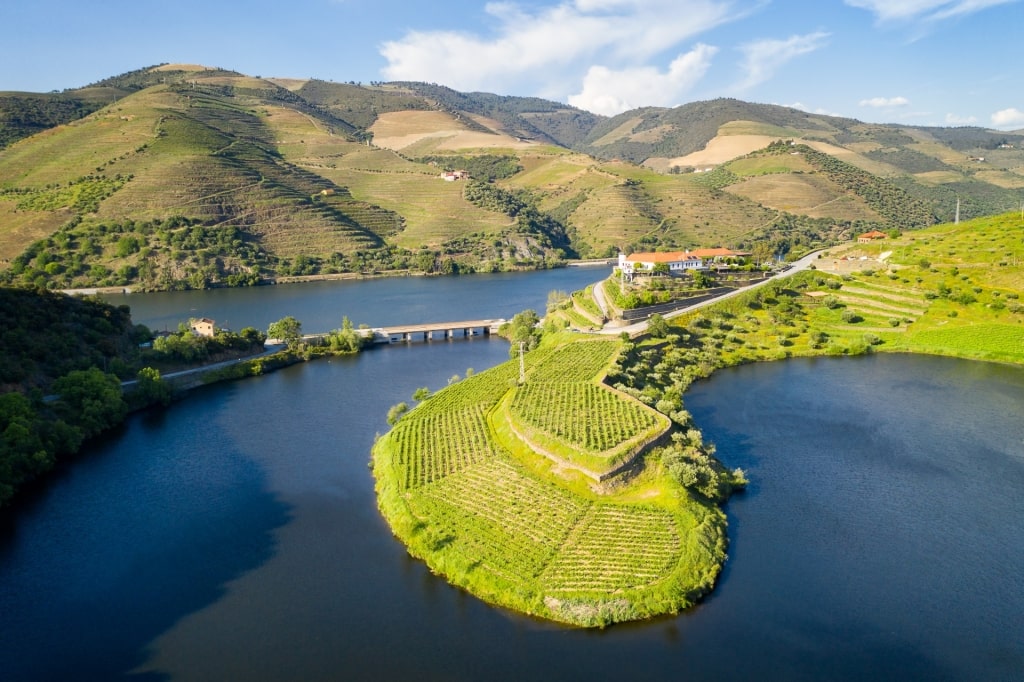
Douro Valley
If you take a cruise or train ride into the Douro Valley, the urban area quickly gives way to nature. Olive, cherry, and almond trees crowd the riverbanks, the cherries festooned with pink blossom early in the season. Further inland, immaculate vines snake around the contours of the hills while holm oaks and eucalyptus grow right down to the water’s edge.
You could spot peregrine falcons, choughs, and griffon vultures in the wildest reaches of the valley. Iberian wolves and wildcats also inhabit the remote Upper Douro, although they keep away from people.
On the south bank of the Douro, where the river meets the Atlantic, you’ll find the dunes and marshes of the Douro Estuary Nature Reserve, an important spot for migratory birds. You’ll see dozens of species here, especially wading birds like plovers and curlews, as well as sandpipers and herons.
Tips for Visiting Porto
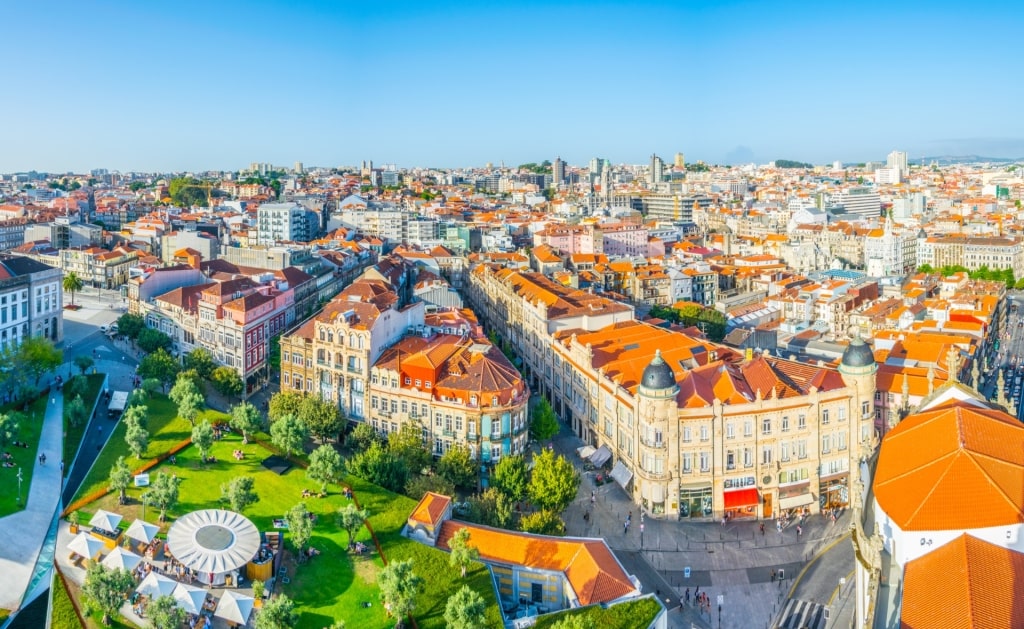
Praca de Lisboa, Porto
Porto and Vila Nova de Gaia, on the opposite bank of the Douro, cling to steep river banks, so prepare for a lot of walking and some hills. A lot of the streets are cobblestone, so wear comfortable shoes. There’s an excellent tram system if you want to use public transport.
Porto is where you’ll find the historic city center and cathedral, but for port tastings and visits to the port lodges, you’ll be across the river in Gaia, as it’s known locally, the heart of the port industry.
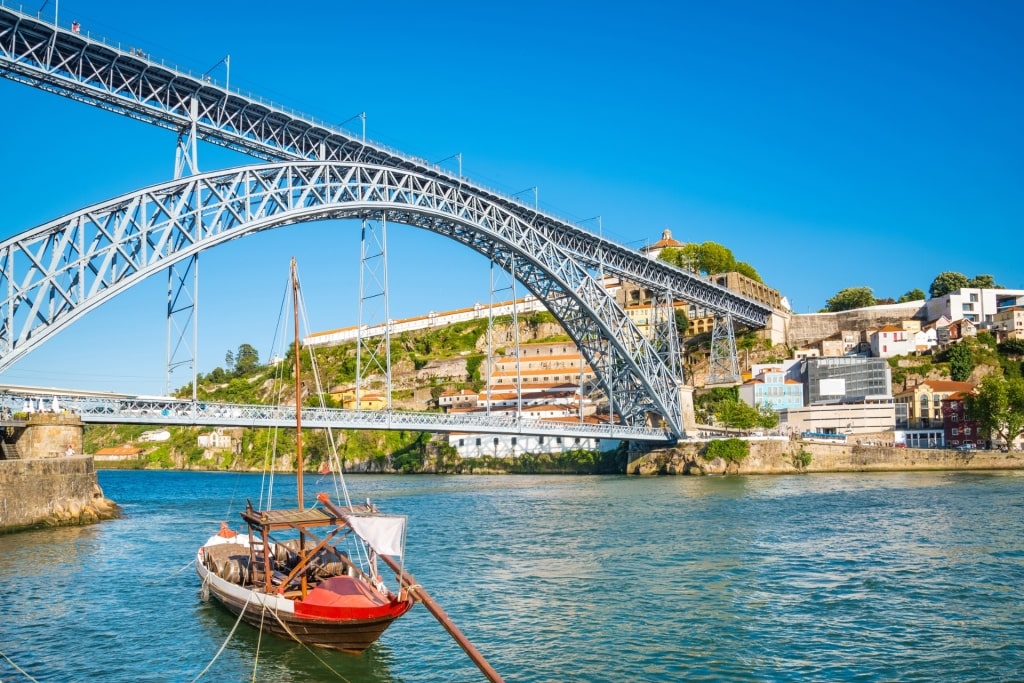
Porto
If you have a head for heights, one of the best views of the city is from the Dom Luis I Bridge, which has a pedestrian walkway. It’s 148 feet above the river, which feels like a long way, but the views of the boats buzzing up and down and the colorful old buildings of Porto are spectacular.
Don’t miss the chance to try some local cuisine, which features a lot of seafood. In a bar, you can ask for petiscos, small portions of local food similar to the Spanish concept of tapas.
Things to Do & Attractions in Porto & the Duoro Valley
Explore the Ribeira District
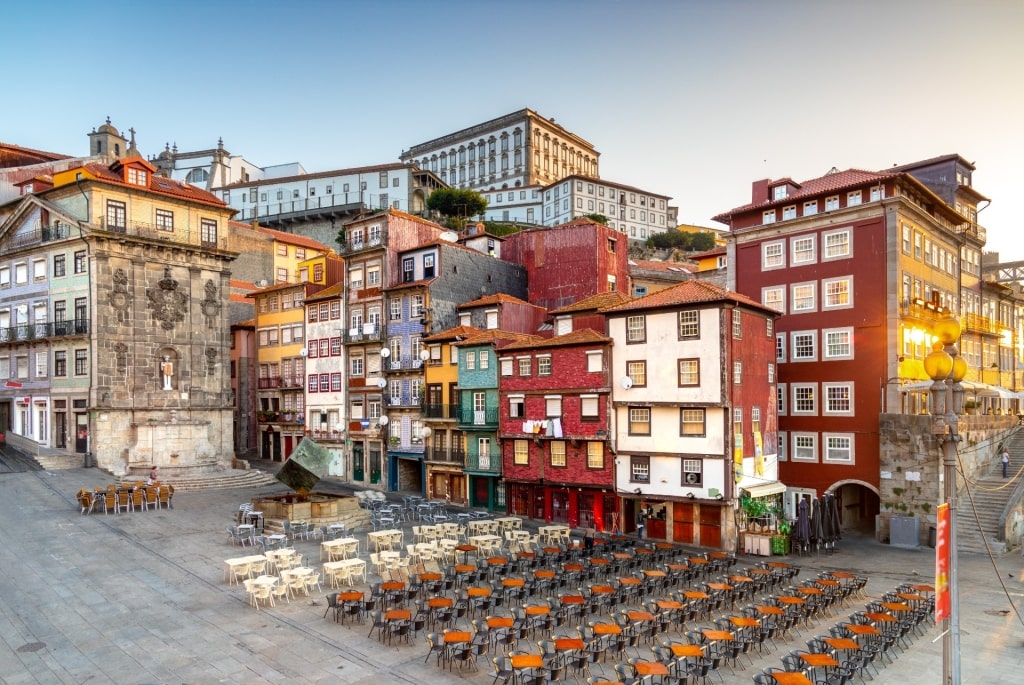
Ribeira District
Arguably Porto’s most enchanting neighborhood, the waterfront Ribeira district, protected by UNESCO, is a tangle of narrow alleyways, skinny, brightly painted houses, fish sellers, and riverside bars and restaurants.
Wandering along the waterfront is one of the best things to do in Porto, where you can also admire the graceful bridges that span the Douro. Flat-bottomed rabelo boats, once used to transport port wine from the Upper Douro to the coast, line up waiting to take visitors on river cruises.
Stroll along the quay to the Church of São Francisco, its baroque interior festooned with gold, and drop into the 14th-century Caso do Infante, where Henry the Navigator is believed to have been born. Today, this building houses a small museum where you can learn about the history of the city.
Take the Train to Pinhão
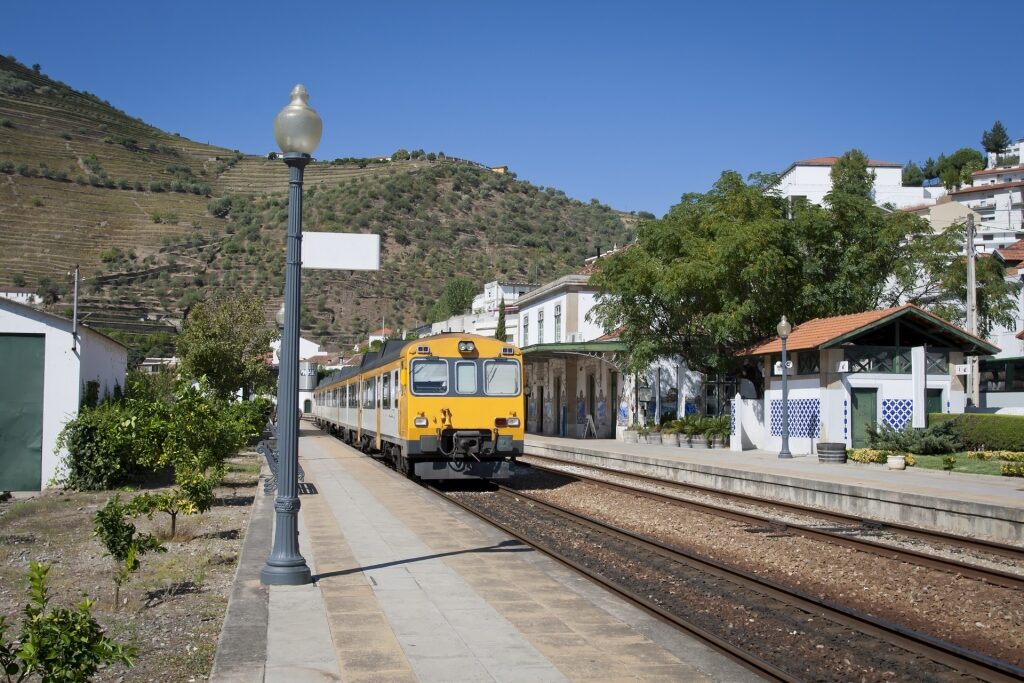
Pinhão
The railway line that follows the Douro River is especially scenic, and a trip as far inland as Pinhão, deep in the hills, is a great way to take in the river, vineyards, and sleepy waterfront villages.
Some trains depart from the famous São Bento Station in Porto Baixa, adorned with some 22,000 hand-painted azulejos tiles depicting historical scenes. Allow time to admire the ticket hall before boarding your train.
The journey takes around two hours and 15 minutes and is an adventure in itself with jaw-dropping views. Once you reach Pinhão, you’ll find more ornate azulejos tiles decorating the station there, as well as waterfront restaurants in which to have lunch and perhaps taste some port.
Visit the Cathedral
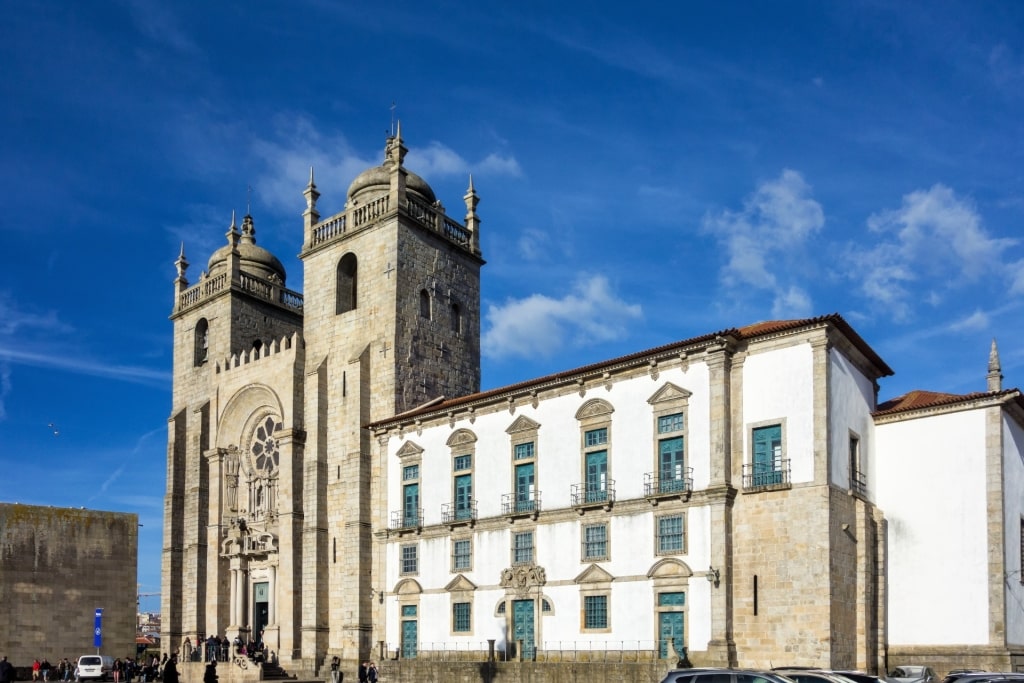
Porto Cathedral
Founded in the 12th century but rebuilt and altered over the years, Porto’s massive, somewhat austere cathedral dominates the highest part of the city, far above the Ribeira riverfront promenade. Some of the ramparts that once protected the city are still present.
Inside, you can see the rose window and gothic cloister that date back to the 14th century. Guides will tell you about the historic events that took place here, too; the great explorer Henry the Navigator was baptized here in the early 14th century.
Learn About Port Wine
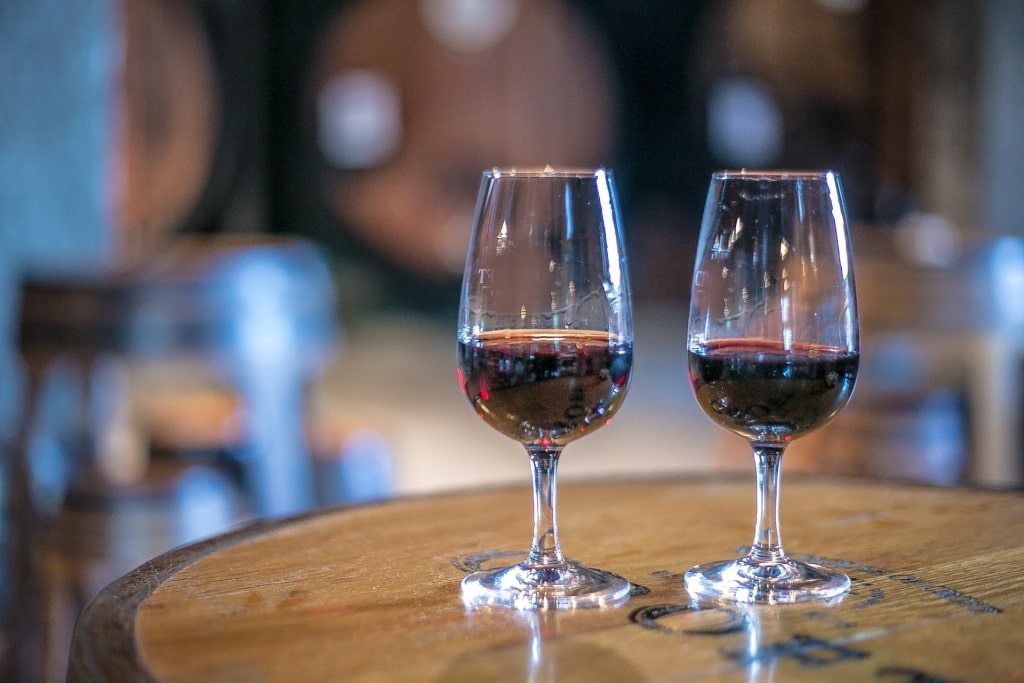
Port wine
Port wine is integral to Porto’s culture, and there’s no better place to educate yourself than WOW, the show-stopping World of Wine Museum. This is actually a cluster of seven museums as well as 12 restaurants and a wine school that brought an old port wine warehouse in Vila Nova de Gaia back to life.
The interactive Wine Experience is a top choice for anybody wanting the story of wine demystified, and entry includes a guided tasting. You can also learn about the cork industry, chocolate-making, and Porto at this impressive place.
After browsing the museums, check out the shops selling everything from local designer fashion to hand-made soaps and fragrances, and of course, all things wine.
Marvel at the Palacio da Bolsa
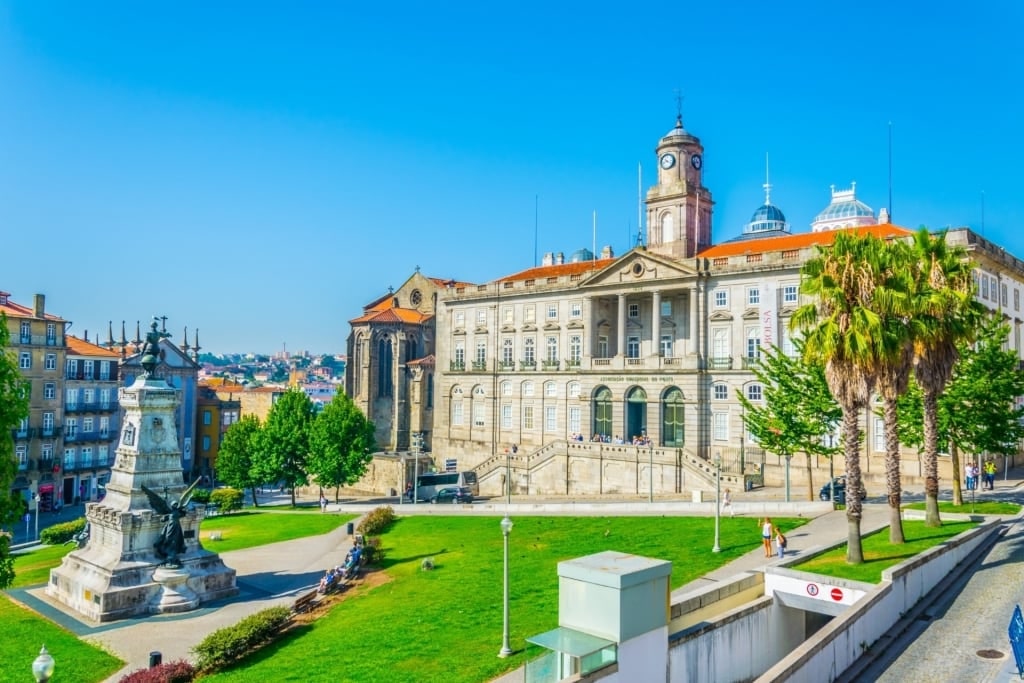
Palacio da Bolsa
Porto’s 19th century Palacio da Bolsa, a neoclassical building once housing the stock exchange, is a spectacular sight. Admire the intricate mosaic floor and the glass-domed Hall of Nations and grand, sweeping staircases.
Guided tours will take you into some of the salons on the upper level. The Arabian Hall, a lavish confection of gold-covered stucco walls in Moorish designs, is one of the most impressive.
Admire Amarante
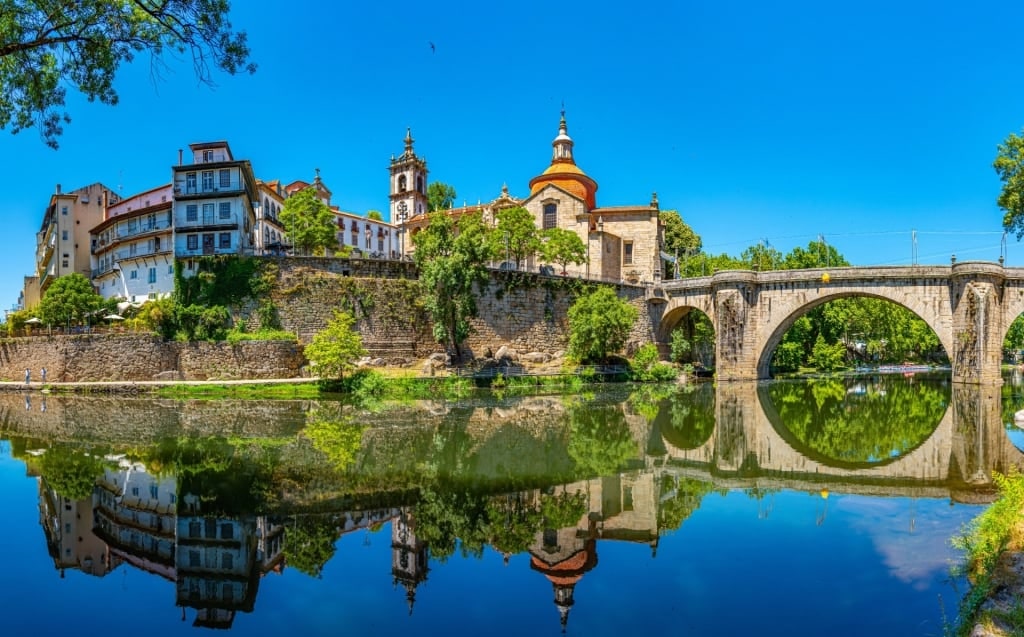
Amarante
Travel deep into the hills of the Douro Valley to the pretty town of Amarante, spilling over the banks of the Tâmega River, the two sides joined by the graceful Ponte de Sâo Gonçalo. It was on this bridge that the locals famously held off invading French troops for two weeks in 1809.
The town is also famed for its pastry shops, and you’ll find welcoming cafés packed with locals gossiping and drinking coffee.
Don’t be shocked by Amarante’s unique and suggestively shaped pastries, bolos. During the festival in June of São Gonçalo, the town’s patron saint, local lotharios offer these pastries to the objects of their desire—an anomaly in what’s essentially a conservative rural community.
Check Out the World’s Most Beautiful Bookshop
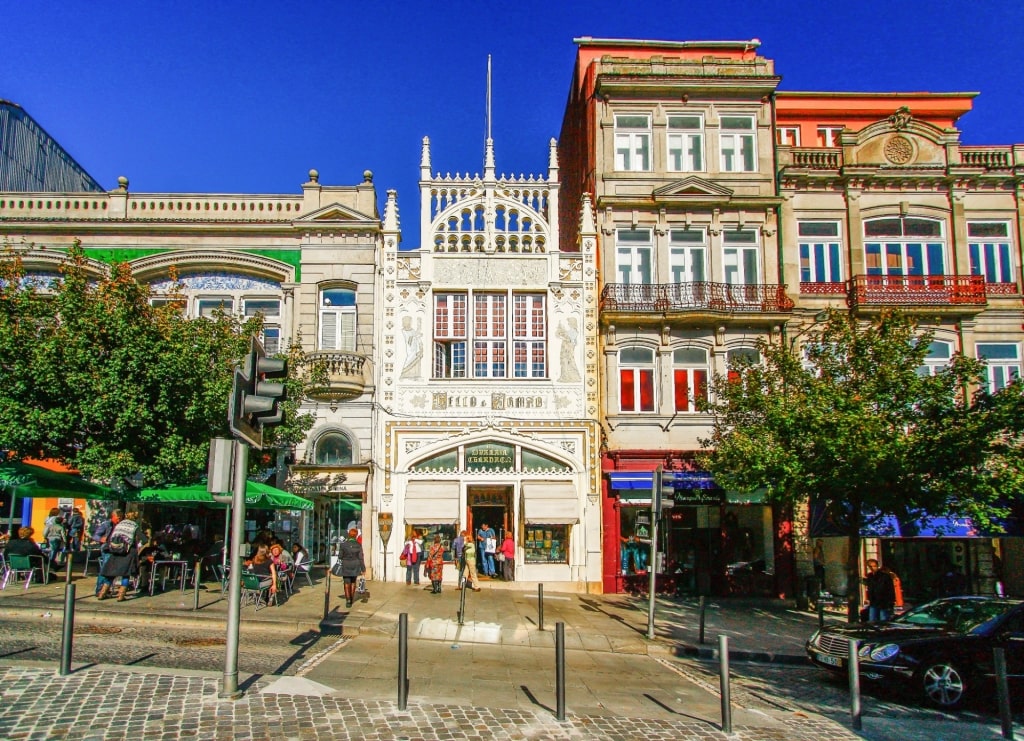
Livraria Lello
Livraria Lello, Porto’s famous neo-Gothic bookshop, has become such an attraction that it now offers timed tickets for entry. The bookshop, which was built in 1906, is one of the best places to visit in Portugal, with a stained glass ceiling and two dramatically curved staircases.
Harry Potter fans believe it to have been the inspiration for the library at Hogwarts School, stemming from the time author J.K. Rowling lived in Porto, although she claims otherwise. Nonetheless, it’s a truly beautiful spot, and there are plenty of books in English to buy. Just remember to book in advance.
Take a Cruise on the Douro
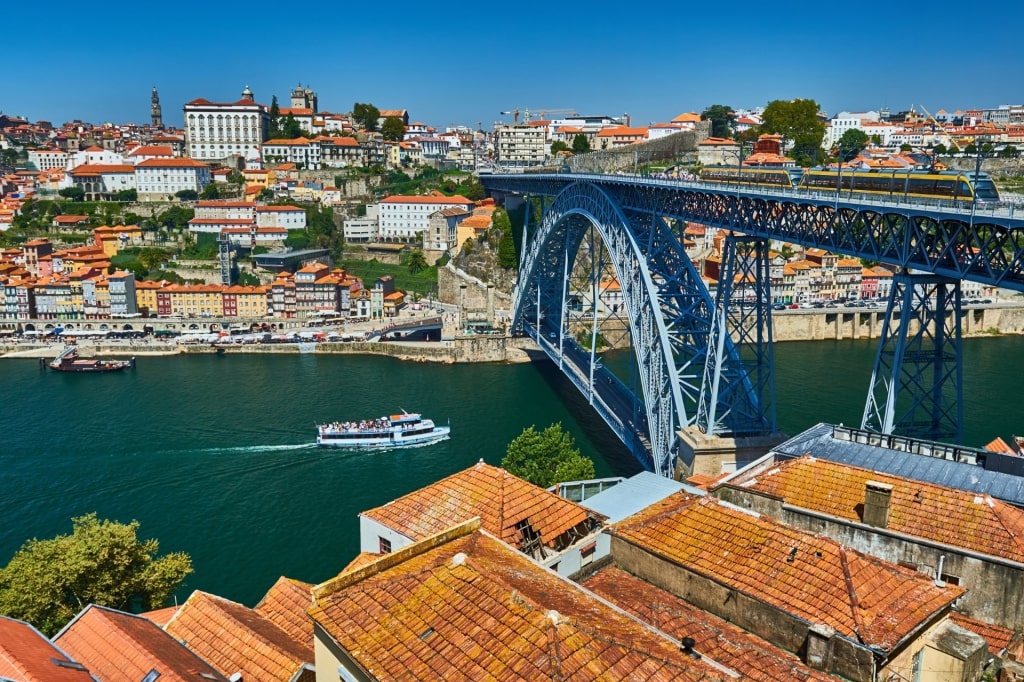
Porto
Combine city sightseeing with a river cruise on the Douro for some of the best views of the city. Sail under the tall Dom Luis I Bridge, taking in the charmingly crooked houses, the bright colors of the facades, the terracotta roofs, and the buzz of life along the river.
You’ll see landmarks like the 18th-century Clerigos Church, easily distinguished by its tall Baroque bell tower, and the Maria Pia Bridge, built in 1877 by Gustave Eiffel.
Head for the Beach
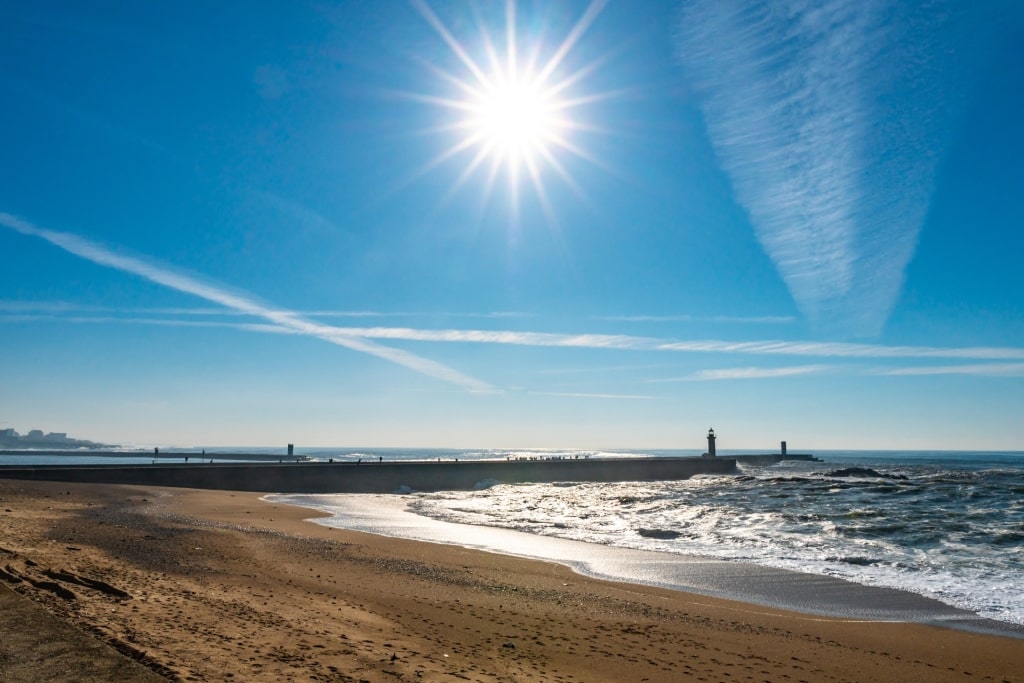
Praia dos Ingleses
If you’re visiting in the height of summer, some beach time may be welcome. There are sandy beaches on the Atlantic shore to the north and south of the mouth of the river with great surfing.
The most scenic way to get to one of Porto’s beaches from the city center is on the 1930s Linha 1 tram, which rattles from the Palacio de Bolsa to Foz, Porto’s ultra-fashionable seaside neighborhood.
Try the long, sandy sweep of Praia dos Ingleses and just beyond it, Praia de Gondarém. Both have plenty of beach bars and cafés nearby. You can also walk from Gondarém to the upscale Mercado da Foz to pick up a picnic of gourmet hams, cheeses, and wines.
Read: Best Beaches in Portugal
Food & Drink
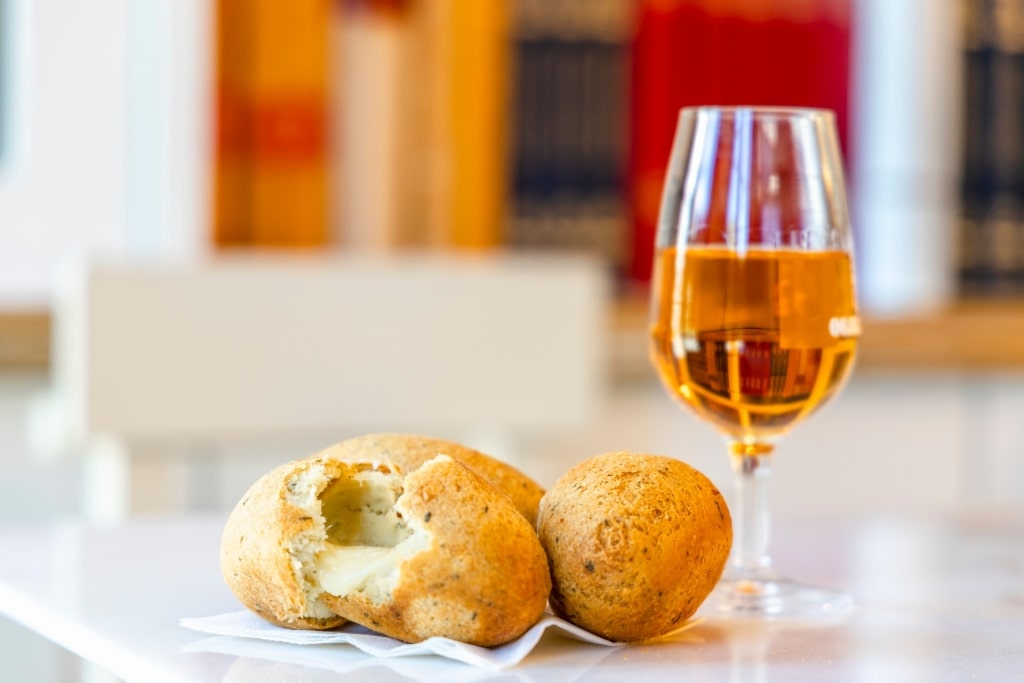
Pastéis de bacalhau
Porto is packed with interesting and authentic places to eat and drink. It also has a robust food culture. Local specialties include creamy cheeses and pastéis de bacalhau, small cod cakes.
The hearty caldo verde, Portugal’s signature soup, is something you’ll find all over the country. This bowl of steaming comfort includes kale, cabbage, potato, and chouriço, a spicy sausage.
If you want to try an authentic dish from Porto, it has to be a francesinha, a fearsome sandwich made from layers of bread, different meats including sausage, ham, and beef, a fried egg, and melted cheese, topped with a hot beer and tomato sauce.
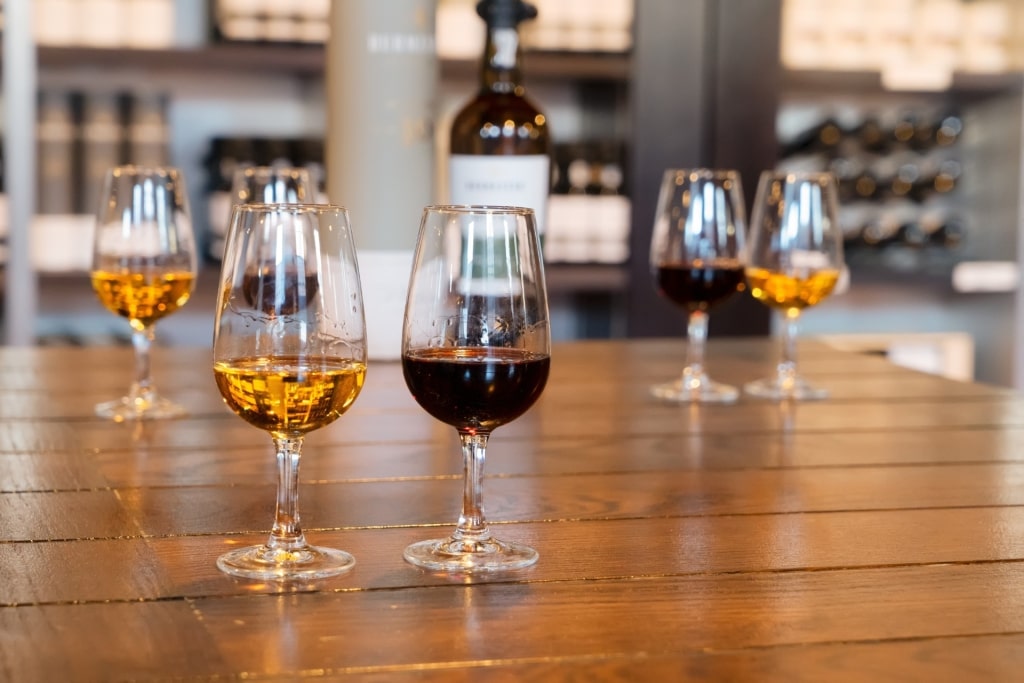
Port wine
You’ll also want to try the wine that Portugal is famous for, of course. Port wine is offered on every tour, and there are tastings available all over the city. There are different types, from the sweet ruby port to the much drier white port, a fashionable summer cocktail served with tonic.
Best Time to Visit Porto & the Duoro Valley
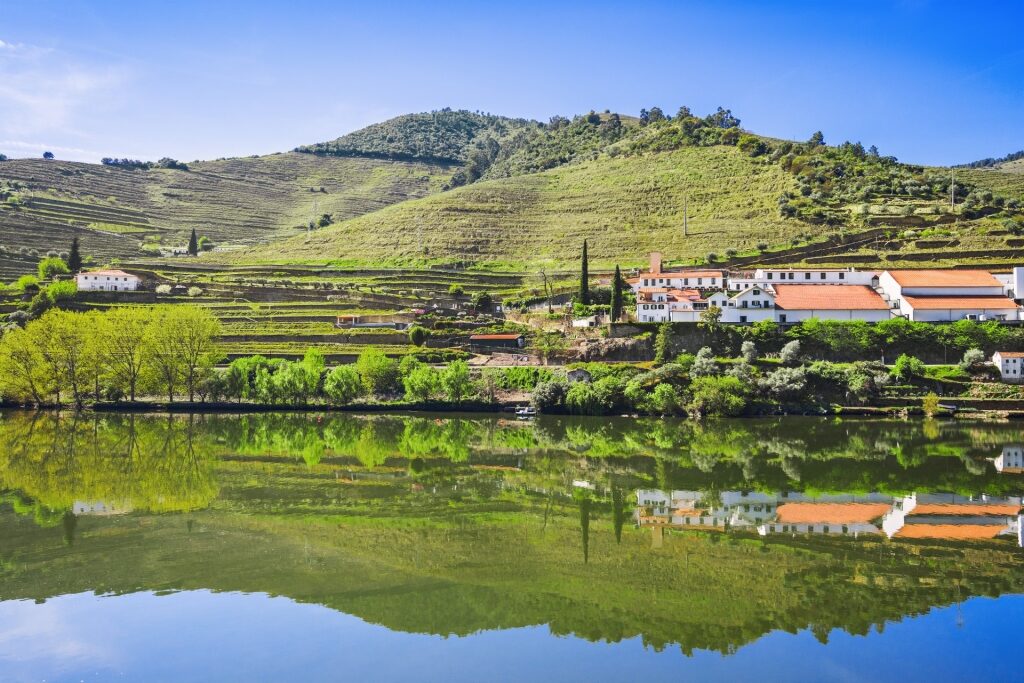
Duoro Valley
The Douro Valley and the city itself enjoy long, hot summers, the heat nearer the coast tempered by sea breezes from the Atlantic.
Summers are warm and sunny; in July and August, expect average highs of 75°F (24°C) on the coast and sometimes hotter inland. Come in April to catch the pink cherry blossom and in late September to witness the wine harvest in the Douro Valley.
Read: Lisbon vs. Porto: Which Should You Visit?
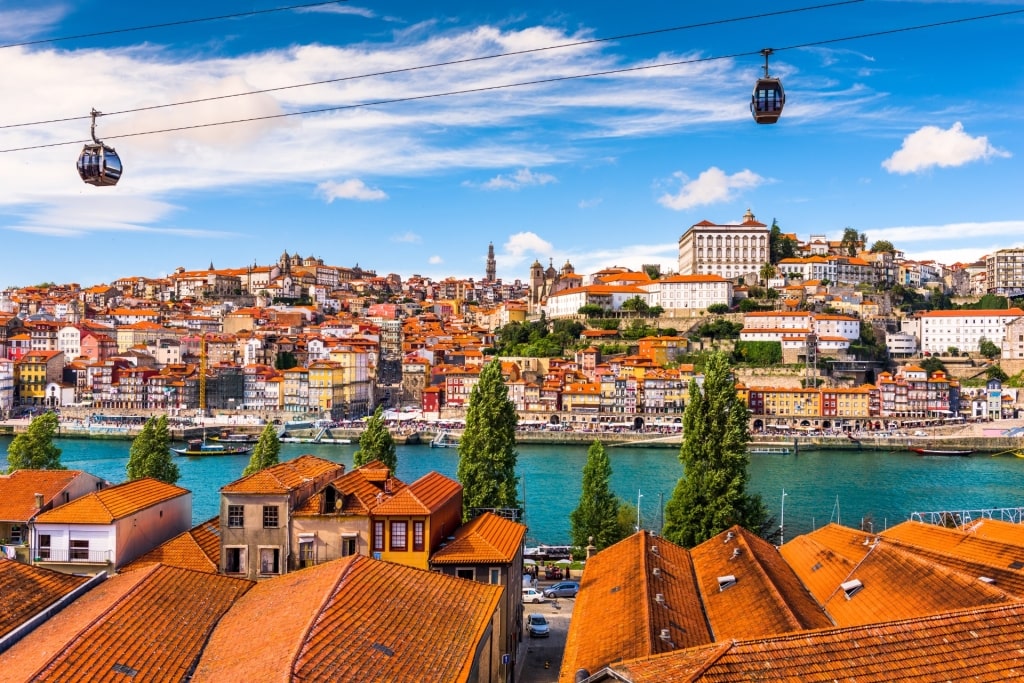
Porto
Are you tempted to discover the delights of northern Portugal? Browse Celebrity’s cruises to Porto and plan your European adventure.
